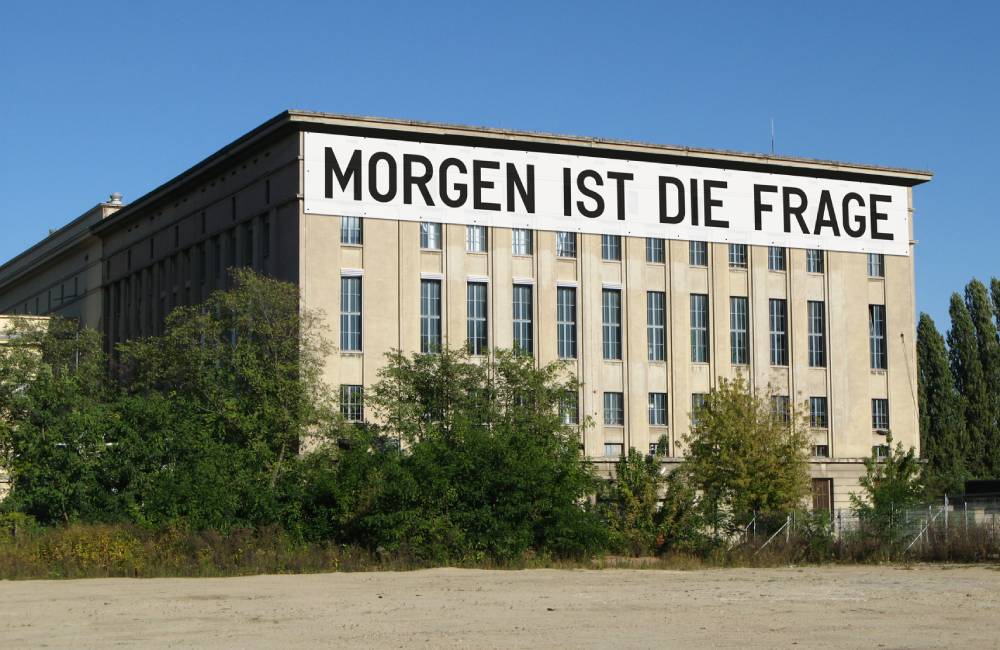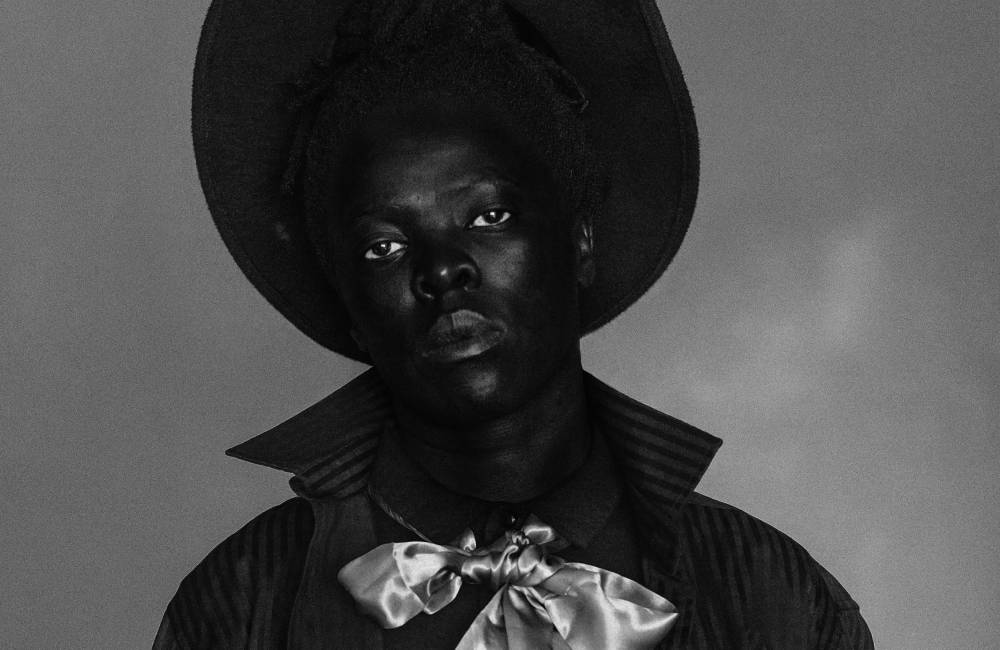
Big names like Olafur Eliasson, Katharina Grosse and Wolfgang Tillmans were among the 118 exclusively Berlin-based artists on show at Sammlung Boros’ exhibition at Berghain. Photo: Rirkrit Tiravanija
In a year dominated by the coronavirus pandemic, who stood out in the art world? Art Editor Anna Larkin highlights the best exhibitions, venues and collections from the last 11 months.
Best group exhibitions
The year’s biggest coup, and perhaps the biggest surprise, was the Studio Berlin exhibition in Berghain’s hallowed halls. Private art collection Sammlung Boros stepped up as curator for the world’s most famous nightclub, taking over the dance floors left empty by the pandemic. Big names like Olafur Eliasson, Katharina Grosse and Wolfgang Tillmans were among the 118 exclusively Berlin-based artists on show, sharing the space with rising stars such as Oliver Laric, Raphaela Vogel and Simon Fujiwara.
The 11th Berlin Biennale finally opened in September, and was a welcome artistic salve in a time of crisis. Four venues showed over 75 artists with works addressing social injustices past and present. The four-person South American team of curators leant towards artists from their home region, which is where they found star exhibit Reverse Gear (2020) by Brazilian theatre company Teatro da Vertigem. Made after the pandemic began, the video documented the group’s performance of a 120-car funeral procession driving through the streets of São Paulo in reverse.

31: Women at Daimler Contemporary was was a triumphant collection of works by women spanning. [Zanele Muholi, Gamalakhe I, 2018 Silbergelatineabzug, Daimler Art Collection, Stuttgart | Berlin]
Best private collections
The Julia Stoschek Collection presented the virtual reality work It Will End in Stars by two Berlin-based Swedes: artist Nathalie Djurberg and musician Hans Berg. Over Berg’s soundtrack, Djurberg put spooky fairytale characters into a mix of post-internet landscapes and a Choose Your Own Adventure book, ending in a flight through a giant’s vagina out into the stars.
31: Women at Daimler Contemporary is a triumphant collection of works by women spanning Anni Albers (1899-1994) to Amalia Valdés (b. 1981). Despite coming from the collection of a multinational car manufacturer, it is a very non-corporate selection with notable pieces by video artist Andrea Fraser and multimedia genius Andrea Zittel. The show is closed for lockdown but has been extended to June 2021. (You can also catch a solo exhibition of new drawings by Zittel at Sprüth Magers until Feb 13.)
Best institutions
Gropius Bau continued its rise with an excellent solo show from Otobong Nkanga and two standout photography exhibitions: Six Songs, Swirling Gracefully in the Taut Air by Berlin-based British-Nigerian photographer Akinbode Akinbiyi and Masculinities: Liberation through Photography (until Jan 10). Akinbiyi’s solo exhibition presented 130 prints stretching back to the 1970s, capturing the complex nuances of urban existence as he walked through metropolises including Lagos, Chicago, Athens, Johannesburg, Dakar and Berlin.
Across 300 photographs and five films, the Masculinities group show fixes an almost anthropological gaze upon the concept of masculinity, with punks, cowboys, queens and politicians having their codified expressions of manliness laid bare. Videos from Kenneth Anger, Andy Warhol and Jeremy Deller are brilliant probes into recent manifestations of masculinity. Karen Korr’s exquisite photos of London mens’ clubs from the early 1980s, Karlheinz Weinberger’s 1961 portraits of young Swiss male rockers and Peter Hujar’s beautiful image of David Brintzenhofe applying make up similarly bring a complex subject to life.
An Elixir of Immortality, the Schinkel Pavillon’s survey show of American artist, musician and critic John Miller, is 2020’s funniest show. By the time you reach the ticket desk, you’ve already navigated a sculpture of a sword set in stone. That’s followed by “NO” spelt out in brown carpet in a room of all-brown artworks, while upstairs a potato waits to trip you before a painting of Batman (penis out) watches you traverse an upper gallery filled with gold-leafed classical ruins. Some works were a little more serious and highlighted the darker side of the art system that Miller is clearly not a keen participant in. In all a very refreshing symmetry of serious and silly.

Under the Cover of Darkness was one of the year’s highlights at Mitte’s Galerie Tanja Wagner. Photo: Kapwani Kiwanga
Best commercial galleries
These spaces have had it a little easier this Corona year, and were able to stay open where museums had to close. Two stand out. Galerie Tanja Wagner began the year with the spectacular Under the Cover of Darkness by Kapwani Kiwanga. The Canadian artist presented a group of elegant sculptures and printed words, surfacing little-known historical realities underpinning the lives of African and Indigenous Americans, such as the oppressive Lantern Laws of 1713. It was a good year for the Canadian artist, who went on to win France’s top art prize, the Prix Marcel Duchamp. (You can see her in the group show How to Human at the gallery until Feb 13.)
Galerie Loock’s exhibition Familienporträts by former Sibylle (the GDR’s answer to Vogue) photographer Christian Borchert (1942-2000) coincided with October’s 30th anniversary of German reunification. Borchert’s simple black and white portraits showed East German family groups photographed in 1983 and again 1993, putting real faces to what often feels more like a purely political story.

Galerie Loock’s Familienporträts coincided with October’s 30th anniversary of German reunification. [Christian Borchert Familie W. (Komponist, Ärztin), Berlin (DDR) 1983 Copyright Fotothek, Dresden Courtesy LOOCK Galerie, Berlin]


